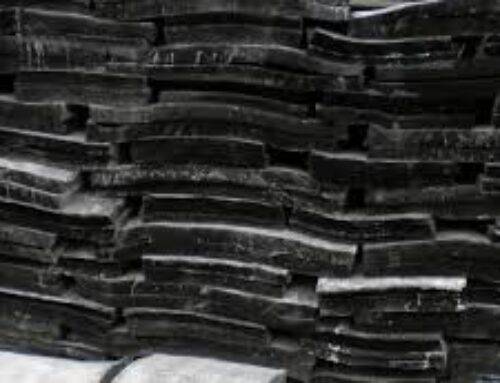mountains of old tires and rubber waste, piling up year after year, polluting our environment. Now imagine turning that waste into a valuable, reusable resource. Sounds like a superhero moment, right? Enter natural reclaimed rubber, the unsung hero for eco-conscious industries looking to balance profitability with sustainability.
The Growing Demand for Sustainability
Understanding the Environmental Impact of Traditional Rubber
Rubber has been a staple in manufacturing for decades, but its environmental toll is hard to ignore. Virgin rubber production contributes to deforestation, high energy use, and significant CO₂ emissions.
The Push for Circular Economy Solutions
As industries pivot toward a circular economy, where resources are reused rather than discarded, reclaimed rubber is emerging as a star player. It ticks all the right boxes: reducing waste, conserving natural resources, and promoting long-term environmental health.
What Is Natural Reclaimed Rubber?
Definition and Key Features
Natural reclaimed rubber is derived from used rubber products—think old tires, tubes, and conveyor belts. Unlike synthetic alternatives, it retains many properties of natural rubber but with a lower environmental impact.
How It Differs from Virgin and Synthetic Rubber
Virgin rubber is made from fresh latex sap, while synthetic rubber relies on petrochemicals. Reclaimed rubber, on the other hand, is made from previously used materials, making it the greener, more sustainable option.
The Process Behind Reclaiming Rubber
Reclaiming rubber is both an art and a science. Here’s how it’s done:
- Collection of Used Rubber: Gathering materials like discarded tires.
- Breaking Down Rubber Materials: Removing impurities and breaking them into smaller particles.
- Reforming into Reclaimed Rubber: Adding chemicals and heat to create a usable, flexible material.
Benefits of Reclaimed Rubber
Environmental Benefits
- Reducing Landfill Waste: Millions of tires find new life instead of ending up in dumps.
- Lowering Carbon Footprint: Producing reclaimed rubber uses less energy and emits fewer greenhouse gases.
Economic Benefits
- Cost-Effective for Manufacturers: Reclaimed rubber is cheaper than virgin materials.
- Long-Term Financial Savings: Businesses save money while promoting sustainability.
Key Industries Using Natural Reclaimed Rubber
- Automotive: Tires, gaskets, and seals.
- Footwear: Soles and insoles made from sustainable materials.
- Construction: Roofing, mats, and sealants.
Why Eco-Conscious Brands Prefer Reclaimed Rubber
Brands are under pressure to go green. Using reclaimed rubber helps them meet sustainability goals, resonate with environmentally conscious consumers, and stand out in competitive markets.
Challenges in Adoption
Overcoming Quality Perception Issues
Some skeptics worry that reclaimed rubber isn’t as durable as virgin rubber. Education and innovation are key to changing this mindset.
Scaling Production to Meet Demand
As demand grows, manufacturers need to invest in infrastructure to scale operations efficiently.
Innovations Driving the Popularity of Reclaimed Rubber
- Advanced Processing Technologies: Better methods mean higher-quality reclaimed rubber.
- Integration with Sustainable Materials: Combining reclaimed rubber with other eco-friendly resources creates even greener products.
Real-Life Success Stories
- Automotive Companies: Leading brands like Michelin are integrating reclaimed rubber into tire production.
- Fashion Brands: Designers use reclaimed rubber for stylish, sustainable footwear.
The Role of Policies and Regulations
Government incentives and industry standards are nudging businesses toward using more reclaimed materials. From tax breaks to eco-certifications, the incentives are hard to ignore.
How Businesses Can Transition to Reclaimed Rubber
- Partner with Sustainable Suppliers: Build relationships with reliable sources of reclaimed rubber.
- Educate Teams and Consumers: Highlight the benefits and dispel myths.
Future Trends in Reclaimed Rubber Use
The future looks bright for reclaimed rubber, with innovations like AI-driven sorting technologies and expanding applications in sectors like aerospace and healthcare.
Conclusion
Natural reclaimed rubber is more than just a sustainable alternative—it’s a game-changer. By embracing it, industries can reduce waste, cut costs, and lead the way toward a greener future.
FAQs
- What makes reclaimed rubber eco-friendly?
It reuses waste materials, reducing landfill waste and energy consumption. - How does reclaimed rubber compare to virgin rubber in quality?
Advances in technology make reclaimed rubber comparable in durability and flexibility. - What are the main challenges of using reclaimed rubber?
Overcoming misconceptions about quality and scaling production. - Which industries benefit the most from reclaimed rubber?
Automotive, fashion, and construction are leading adopters. - Can reclaimed rubber be recycled again?
Yes, depending on the application and processing methods.









Leave A Comment